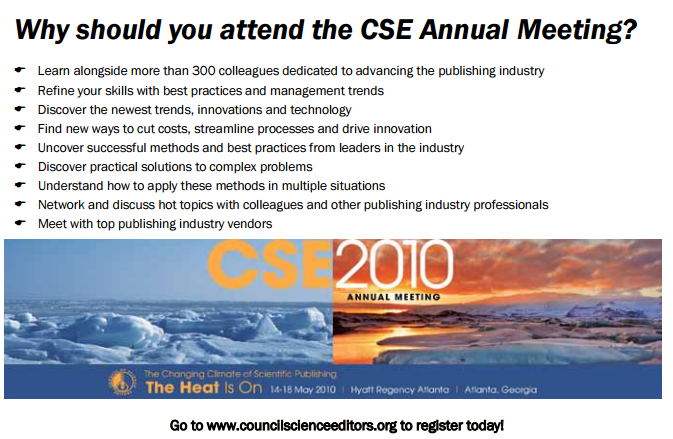Copy-editing Confusion
I’m an unlikely professional science writer and editor. Like many who stumbled into the field, I followed a circuitous path. It was a long time before I found my way and recognized that I could turn my passion into a livelihood. Because my background is distinctly nonliterary, I had never heard of style and had no idea that books like The Elements of Style existed (which is even more surprising considering that I graduated from Cornell—old Ezra would turn in his grave). But it was only a matter of time before I came face to face with a structured course on style, usage, grammar, punctuation, and syntax (naysayers, it was totally worth going to journalism graduate school!). Here are some irreverent comments on copyediting thich I believe we all can appreciate.
The thich alternative. Until I was 8, I didn’t know right from left. And I’m not making some existential statement— I literally didn’t know my right from my left. Eventually, I figured out that there was a mole on my right hand and deduced direction that way. I followed that mole for years (thank goodness I didn’t lose my hand in some tragic farm accident). For fear of ridicule, I kept my “directional” mole a little secret until I was 11, when my parents staged an educational intervention—blindfold, plank, and all. As right and left once did, the difference between that and which confounds me. A concept that is apparent to most professional writers and editors is lost on me. Sure, that is used with restrictive or essential clauses, and which is used with nonrestrictive or nonessential clauses, but if asked to determine whether something is essential or not, I err on the side of packing my boxer shorts when I check the mailbox. I’m all for petitioning Merriam-Webster to embrace an all-inclusive thich alternative.
The hyphen, en dash, em dash, and uhmm dash. There are probably a million better ways to spend your time than getting lost in this confusion. I imagine that people who are interested in “dash” differences spend their free time in splitting the tertiary protein structure of kinked hair and feel uncomfortable rounding to four decimal spaces. Suffice it to say, I still don’t completely understand the difference among these sometimes supersimilar punctuation marks.
The much maligned semicolon. Dumping on the semicolon is a popular pastime for professional writers and editors everywhere. How a punctuation mark could be considered “ugly” is beyond me, but this poor period–comma hybrid has been thus spurned like some red-headed stepchild. Honestly, I kind of like the little bugger, but because I’m probably in the minority, I’ve resigned myself to using the semicolon in only two situations: when joining two closely related independent clauses and when breaking up a series that contains internal punctuation.
Comma drama. Before I studied the use of the comma, I think I understood commas better. I just placed them where I felt them—after short pauses. But now that I “understand” how they’re used, oh (,?) how I yearn for my previous ignorance. The comma rule that confuses me most? Setting off nonrestrictive clauses preceding independent clauses (see “The thich alternative”).
Crikey! Hyphen, no hyphen, or compound word? Oh, the disgust. I don’t care who you are, everybody appreciates this question. For example, do I e-mail, email or e mail? (Well, probably not that last one.) I can see no way around this problem other than memorizing the dictionary (good luck with that—I still look up my ZIP code every time I write the return address on an envelope). One great tip: “up” expressions used as verbs are normally unhyphenated (he followed up, she charged up, I threw up, and so forth).
What the heck are “auxiliary modal verbs”? Might, must, may, can, would, should, had to, and ought to—these are all called auxiliary modal verbs. I may not remember my wife’s birth date, but for some reason, I can’t forget what these words are called (maybe they’ll cook me dinner someday— the Commas aren’t invited). These words have different connotations. Some distinctions were hammered into my cortex early (“May I use the bathroom?”), but others are less obvious. For example, some proffer that may expressions are more definite than might expressions. (I remember receiving a follow-up letter from the only medical school that eventually accepted me stating that I might be pulled off the waitlist—at the time, had I realized what this could mean, I may have lost my water.)
“Editing references”, no thanks— please pass the ground glass. Editing references cited, endnotes, footnotes, and bibliographies is a special form of divine punishment—a tenth circle of hell to which the sinner’s sinner is relegated. All those who do it, I salute you. I can’t help feeling that I’m cleaning up after somebody else’s puppy.
Despite my mixed feelings about many style nuances, conventions, and guidelines, I can’t seem to get enough of them. I doubt that too many other people curl up with Fowler, take a copy of the OED on vacation with them, or troll the online grammar forums picking virtual fights. The “rules” comfort me in some strange way and provide me countless hours of enjoyment: In the end, I guess I’m just a sucker for structure …
Naveed Saleh is a physician–journalist, a freelance editor, and a science-journalism graduate student at Texas A&M University.

